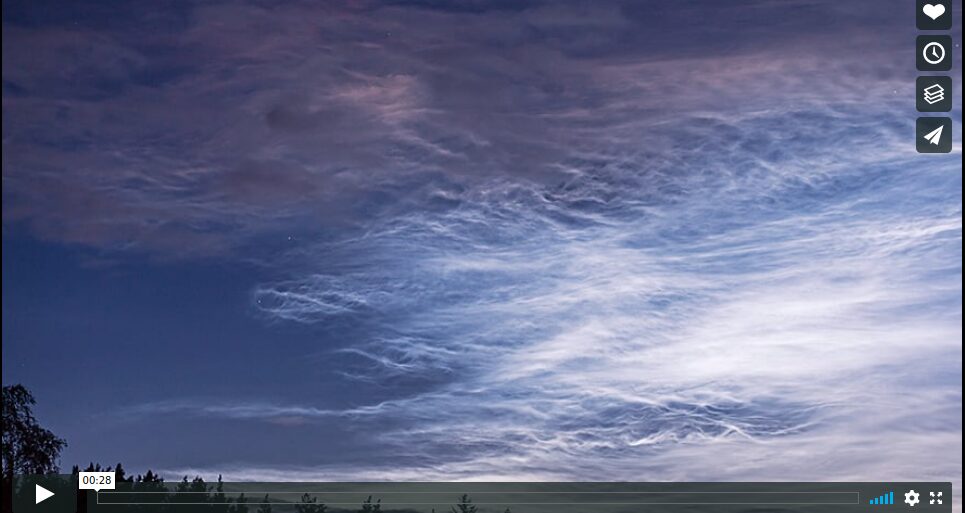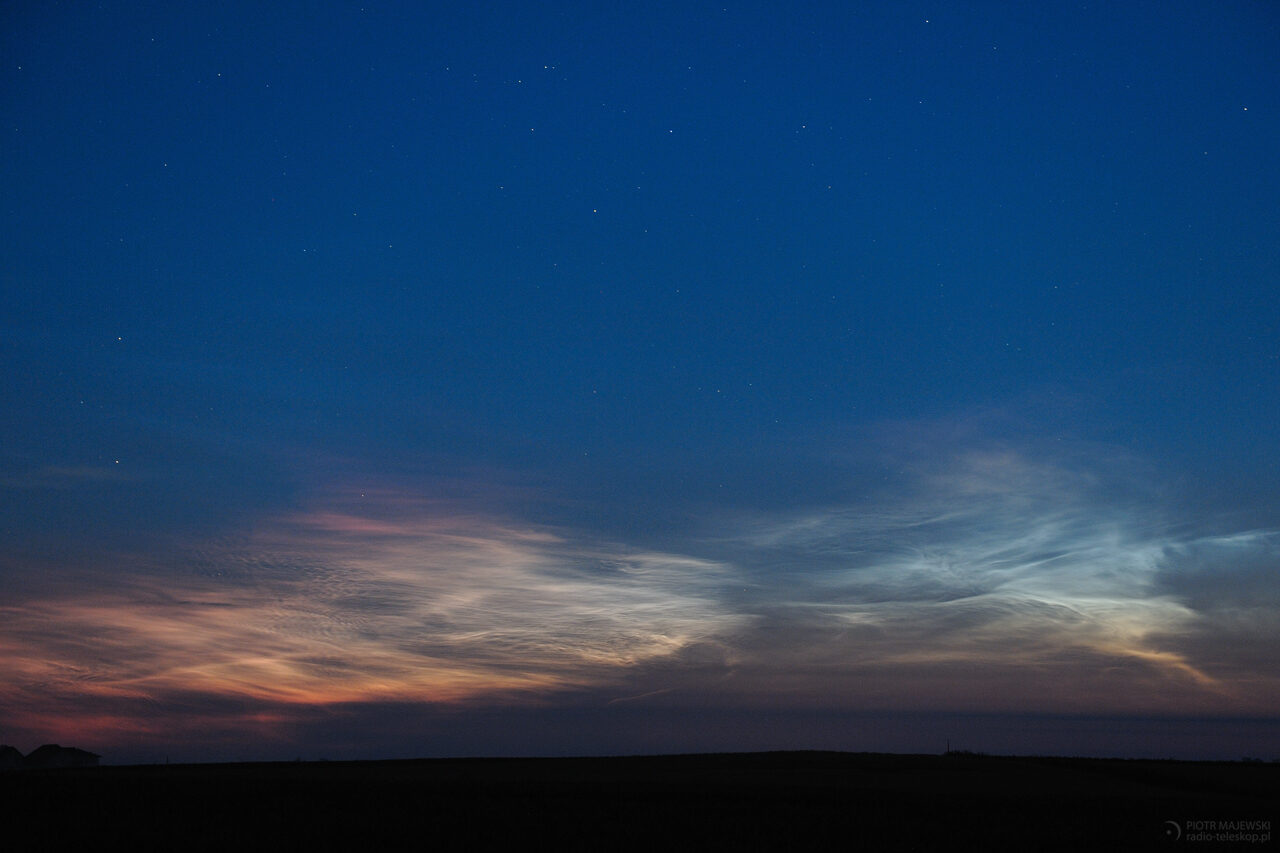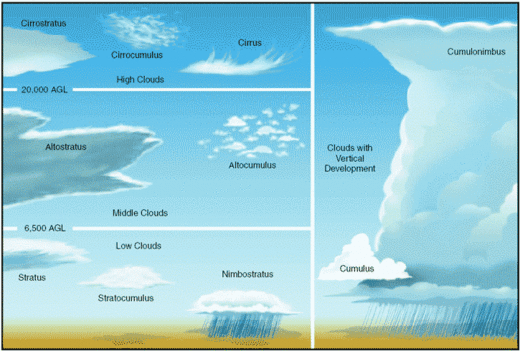Hedén hopped in his car and drove to a clear site for a better look. The movie he made, above, shows the dynamics of the clouds and the development of their amber crown. "This all happened around local midnight," he says.
NLCs are Earth's highest clouds. Seeded by meteoroids, they float at the edge of space 83 km above the ground. Hedén's video shows ordinary clouds scudding dark and low across the Swedish landscape. NLCs float high overhead, catching the rays of the sun, which is still "up" at their extremely high altitude.
Credit: P-M Hedén
This isn't the first time people have seen red noctilucent clouds. There was a significant outbreak of red NLCs over Europe on June 21, 2019. However, they are rare and not fully understood.
To understand what makes NLCs red, first we have to ask What makes them blue? The answer is ozone. Research in the 1970s revealed that much of the sunlight hitting noctilucent clouds first passes through Earth's ozone layer. Ozone absorbs red light, while allowing blue to pass. This filtered light gives NLCs an azure hue.
The origin of red is less certain. One idea, probably the best, comes from a 1988 paper in the Journal of Atmospheric and Terrestrial Physics entitled "The coloured edge of noctilucent clouds." The authors note that "Noctilucent clouds are illuminated by sunlight which passes obliquely through the atmosphere. The lowest rays may pass only a few kilometres above sea level." These low rays are strongly reddened (like sunsets) and bent by refraction; some of them may be redirected to the tops of NLCs.
Is that right? Even many specialists in NLC research aren't sure, which means every sighting is a bit of a mystery. Northern sky watchers, if you're seeing red, submit your photos here.
A DOUBLE MINOR METEOR SHOWER
Tonight, July 28-29, Earth is passing through streams of debris from two comets: 96P/Machholz and 169P/NEAT. Naturally, this is causing two meteor showers: the Southern Delta Aquarids and the alpha Capricornids. Added together, they produce 10 to 20 meteors per hour--a relatively minor display. The best time to look is during the dark hours between midnight and sunrise.







Comment: It's notable that the most recent sighting of rare red NLC's was just last year, because rare phenomena of all kinds appear to be on the increase in recent years:
- Stunning iridescent clouds snapped above skies of Siberia's Belukha mountain
- Gigantic jet photographed piercing the sky in China
- Rarely-seen atmospheric gravity wave phenomenon captured by satellite over Australia
- Strange skies: Red Sprites in Oklahoma, aurora Steve in Canada, iridescent clouds in Illinois and noctilucent clouds in Denmark
- Strange but beautiful skies: Noctilucent 'tornado' cloud, auroras, double and twin rainbow plus a midnight rainbow
And check out SOTT radio's: